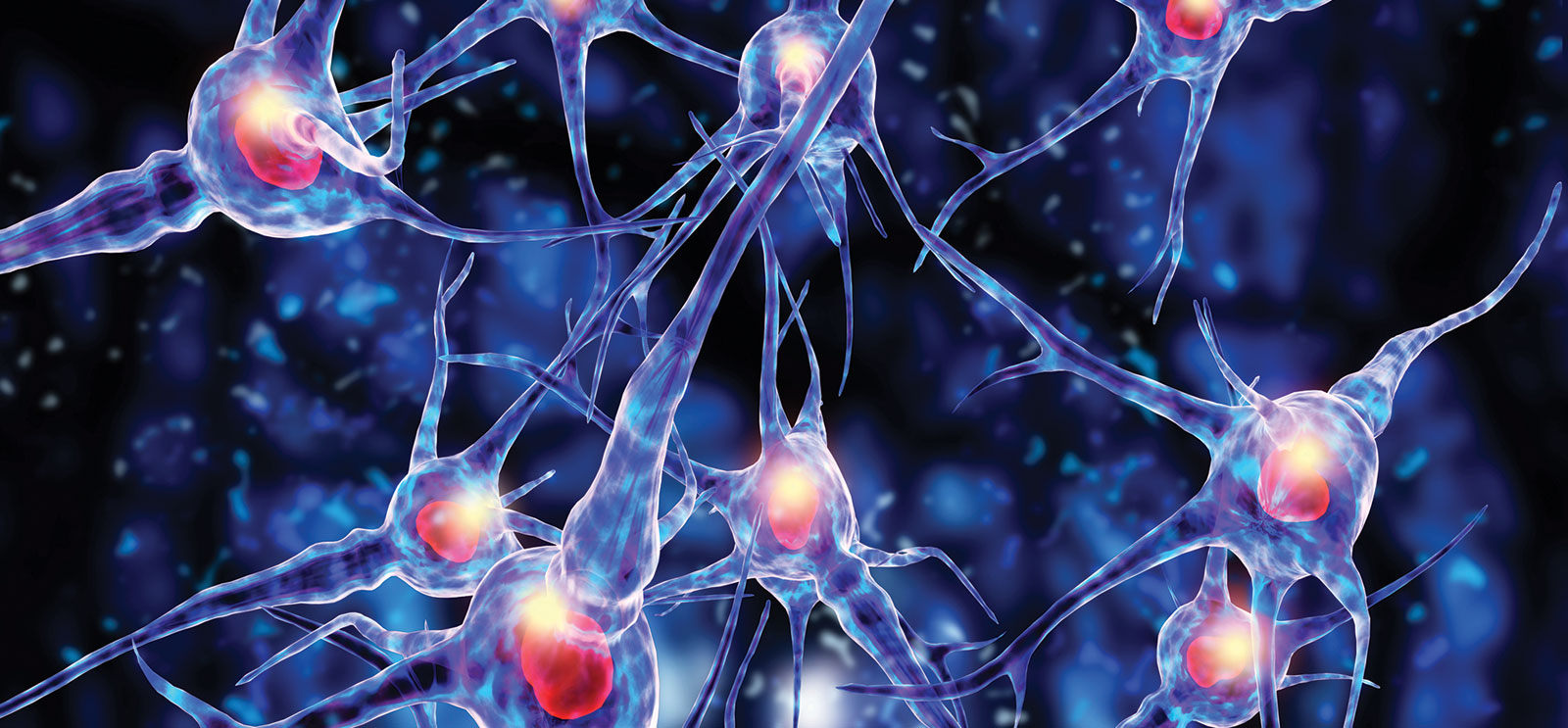
The human brain contains more than 100 billion nerve cells, which makes complicated work for neurologist James Mastrianni. His research aims to predict, and eventually prevent, the onset of dementia. (©iStock.com/Ralwel)
Grossman Institute scholars explore—and begin to explain—the brain’s vast complexities.
Even experts have a hard time getting their heads around the magnitude of the human brain. “Each of our brains contains more than a hundred billion neurons,” says neurobiologist John Maunsell, “and your hundred billion neurons are interconnected by more than a hundred thousand miles of cellular wiring.”
Maunsell directs the Grossman Institute for Neuroscience, Quantitative Biology, and Human Behavior, the University’s “intellectual home” for researchers navigating that vast landscape. The institute encompasses the work of faculty members in biology, chemistry, psychology, molecular engineering, computer science, mathematics, medicine, and many other fields.
There is no subject, in effect, that could not reveal something about the brain. “Every sensation, every movement, every thought, every emotion we have arises from the brain,” Maunsell says. How it works “is still largely a mystery, but we’re beginning to get answers.”
At a UChicago Discovery Series event at the Logan Center this past spring, “Brain Teasers: Cracking the Mind’s Toughest Riddles,” Maunsell introduced four Grossman Institute scholars to share some of their answers. First Sliman Bensmaia, assistant professor of organismal biology and anatomy, explained how his lab is researching prosthetics that connect to the nervous system, recreating sensory experience for those who have lost it to injury or illness. Then Sian Beilock, professor of psychology, showed where in the brain the fear of math arises and how to prevent that anxiety from compromising test performance. And Peggy Mason, professor of neurobiology, reported the latest in her work with rats to understand the biological impulse that inspires mammals to help each other.
James Mastrianni, associate professor of neurology and director of the Center for Comprehensive Care and Research on Memory Disorders, discussed a particularly vexing challenge for brain researchers—dementia. Like cancer, Mastrianni explained, dementia is a general term that encompasses many types of conditions. He’s an expert in exceedingly rare forms called prion diseases—transmissible neurodegenerative conditions, such as mad cow disease, that occur mostly in cattle, sheep, and cannibals. Although prion diseases affect only about 300 people per year in the United States, the pathological similarities to more common types of dementia extend the impact of Mastrianni’s clinical work and research.
Conditions such as Alzheimer’s, Parkinson’s, and ALS share a characteristic with prion diseases—they all progress through the spread of misfolded proteins. When a misfolded protein interacts with a healthy cell, it causes the normal protein to fold incorrectly, a process that perpetuates itself, Mastrianni said, “until it really encompasses the entire brain and causes severe neurological disease.”
Brain scans of patients with prion diseases reveal clumps of a protein called amyloid, the presence of which also marks Alzheimer’s disease. Mastrianni’s lab is testing treatments to break down accumulated amyloid, to stop the misfolding process, and to potentially prevent that process in people who have a genetic predisposition.
The nature of the disorders, though, makes it difficult to diagnose patients early enough to make a difference. Many people have age-related memory problems that are a nuisance, but these are not necessarily a symptom of disease, and often never require treatment.
In that context, identifying people most likely to develop neurodegenerative diseases before they reach a clinical point of no return becomes a confounding but essential challenge. “If we wait too long,” Mastrianni said, “patients are not going to get better.”
Using brain imaging techniques and tracking subjects through neuropsychological evaluations, he has gathered data that shows promise in predicting who will develop Alzheimer’s. Examining the “fiber bundles of neurons that lead into the hippocampus”—the pathways to the brain’s center for consolidating and storing memories—Mastrianni evaluated the likelihood of disease progression.
Scans from patients with mild impairment fell into two groups. One group had neural connections comparable to the brains of people with no memory problems, while the other showed atrophy that already resembled Alzheimer’s patients.
Over time people in the latter group developed the disease and those in the first group did not, results that suggest a potential path to targeted treatment. The research offers a hopeful peek into a future where the most debilitating effects of neurodegenerative conditions can be mitigated or avoided with early therapies for those at the highest risk.
“This is a pilot study,” Mastrianni emphasized, “but so far we’ve been having 100 percent success in predicting who is going to develop Alzheimer’s disease.”
If not yet a definitive answer, those results go a long way toward unraveling one of the brain’s most stubborn mysteries.
